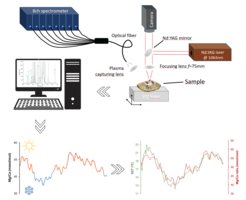A New Method for Reconstructing Palaeotemperatures from Marine Mollusc Shells
The measurement of the elemental makeup of shells is an increasingly common method for obtaining high-resolution insights into paleoclimate and past seasonality. Several studies have shown significant correlations between the magnesium and calcium (Mg/Ca) ratios measured on shell carbonate and the seawater temperature within which the carbonate was formed. However, other investigations have reported large variability in this relationship, depending on the species. Therefore, further studies that include taxa previously not considered are essential for validating these new species as suitable climate proxies. Despite Patella depressa being one of the most common mollusc species found in Holocene archaeological assemblages along the Atlantic coast of Europe, Mg/Ca ratio values of this taxon have never been tested as a seawater palaeothermometer.

In a new study published in the journal Applied Science, Asier Garcia-Escarzaga and Patrick Roberts of the Max Planck Institute for the Science of Human History, in collaboration with scholars from the University of Cantabria and University of the Basque Country, have explored the ability of Mg/Ca ratio values obtained from Patella depressa to be used as an environmental recorder for the first time. Moreover, the elemental ratio was measured using Laser Induced Breakdown Spectroscopy (LIBS), a cutting-edge technique with the potential to transform archaeological and palaeoclimate studies based on carbonate chemistry. The researchers compared the Mg/Ca ratios along the P. depressa shell growth axis with the seawater temperatures measured at the place where the mollusc grew, as well as with stable oxygen isotope (δ18O) profiles - a well-established and reliable climate recorder - previously obtained from these same limpets.

The authors found a significant correlation between Mg/Ca ratio series and both seawater temperatures and δ18O profiles, highlighting the paleoenvironmental and archaeological potential of elemental analyses through LIBS analyses. This novel investigation establishes a new, fast, and cost-effective environmental archive for future palaeoclimate investigation in northern Iberia, but also more widely along the Atlantic coast of Europe. In particular, analysis of this species from archaeological sites should provide important insights into the seasonality of resource collection by past human populations, as well as the marine climates they were forced to contend with.

